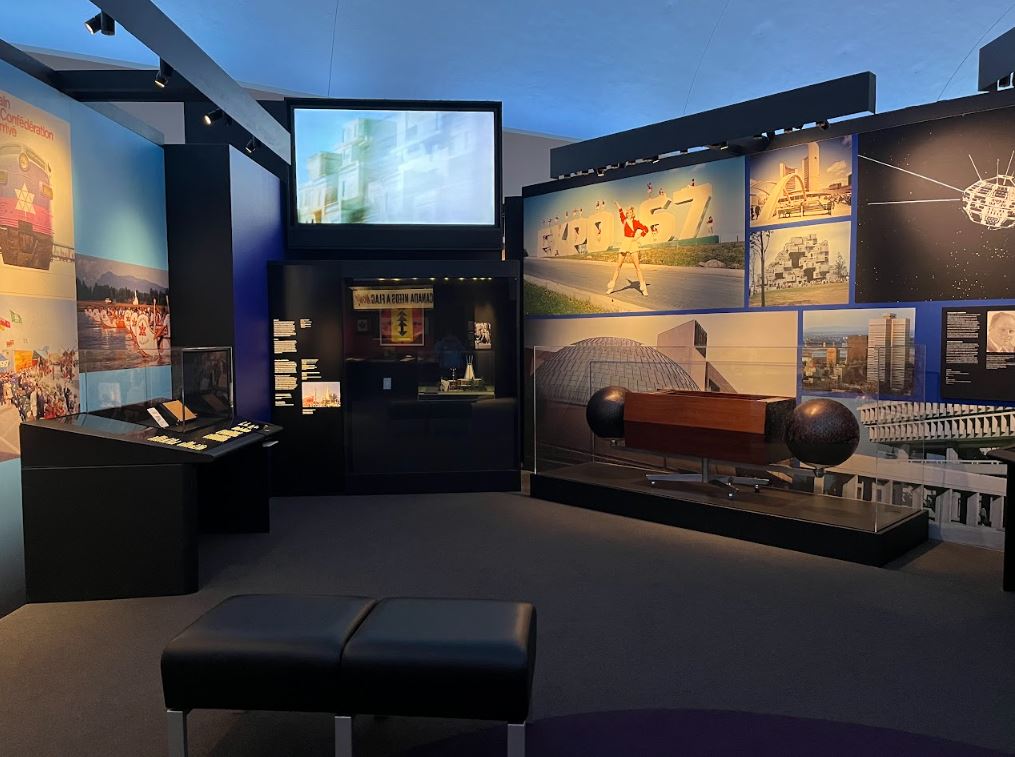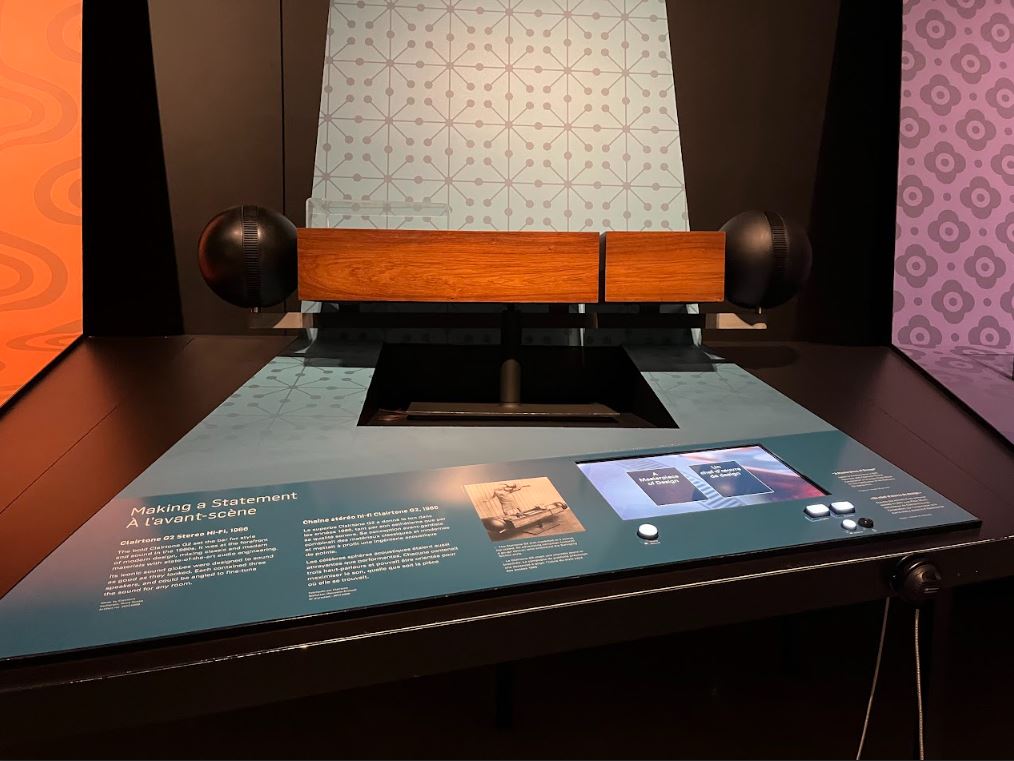Clairtone Project G stereos, an iconic Canadian design, provide a case in point. Examples of Clairtone stereos are displayed at the Canadian Museum of History (CMH) and the Canada Science and Technology Museum (CSTM); however, the curatorial approaches at each institution offer contrasting interpretations. At CMH, the Project G Stereo is showcased in the Modern Canada exhibition in the Canadian History Hall, which narrates the country’s historical timeline. By placing the Clairtone within the narrative of Expo 67, it positions the artefact as a reflection of the optimism and national pride Canada felt by showcasing its design innovation on the international stage. This interpretation, however, confines the object to solely being an artefact of Expo 67, providing a limited lens that does not capture the social and cultural significance of the Clairtone Sound Corporation or that Project G Stereo had on the evolution of Canadian design. This is an example of how an object’s context within a non-design museum may dampen the voice of design narratives.

This stands in contrast with the G2 Stereo at CSTM, which is displayed with a different focus. Here the artefact is placed on a pedestal alongside other ‘Design Icons’ representing a pivotal sound technology by decade. This makes the artefact dominate the space, invoking a sense of pride and grandeur. Visitors are compelled to look at the artefact, creating distance between the object and the visitor. This positions the G2 as a pinnacle of design innovation and design achievement. The display communicates that this artefact is a technology and an icon symbolizing wealth. The interpretive text focuses on the advancements of the G2 compared to its predecessor – the G – which shows the advancements the G2 embodies and its continuing legacy in Canadian design. Unlike the CMH display, which highlights the object’s place within the context of Expo 67, the G2 at CSTM stands alone as a symbol of a moment in time. That said, this exhibit does not address other aspects of design. For instance, the exhibit does not engage with the idea of the industrial processes involved in manufacturing these technologies for a Canadian market. This shows tension between inclusion and diversity of design narratives within museum narratives.

Clairtone Project G2 Stereo, Sound by Design exhibit, Canada Science and Technology Museum. Photo: Dhatri Gunupudi
For my thesis, I’m interested in exploring how artefacts collected in national museums can bridge the worlds of design, technology, history, culture, and society. How can museums better curate design objects to reflect their multifaceted impact on society? By comparing exhibitions, like those featuring Clairtone stereos, and by interviewing curators at both institutions who have curated design in Canada, my research hopes to spark new conversations about how design, and the role of design in our cultural heritage, can be better incorporated into museum practices nationwide.
Dhatri Gunupudi, MDes RA Carleton University

